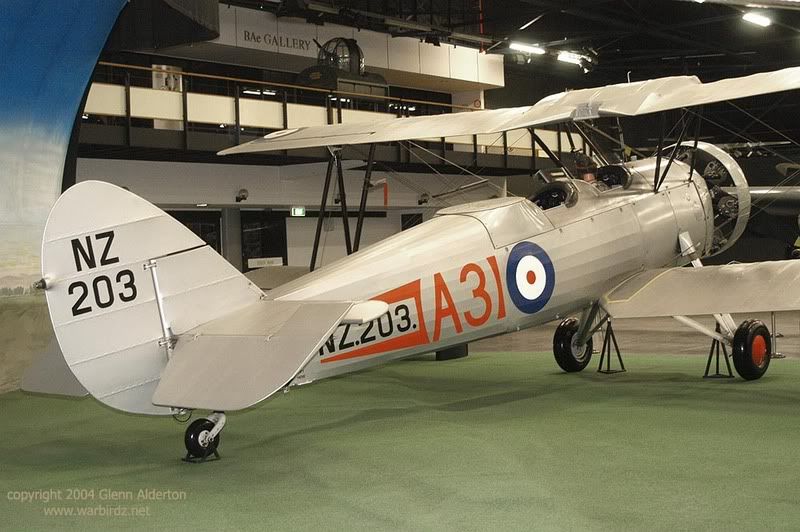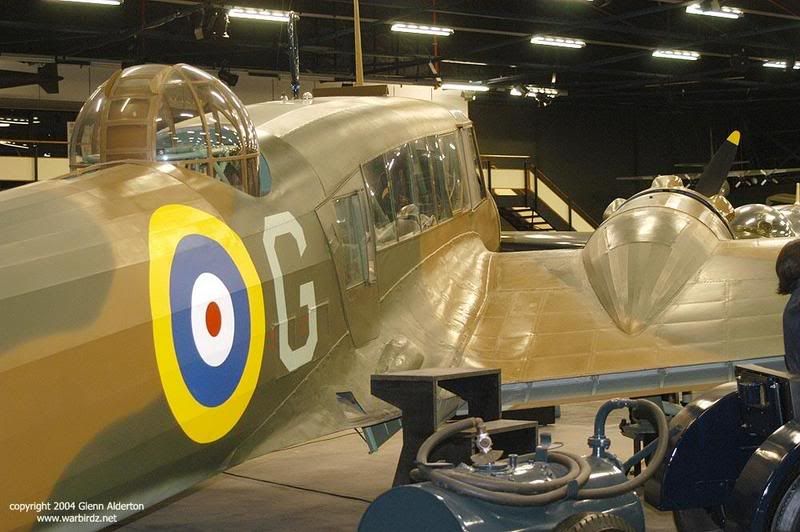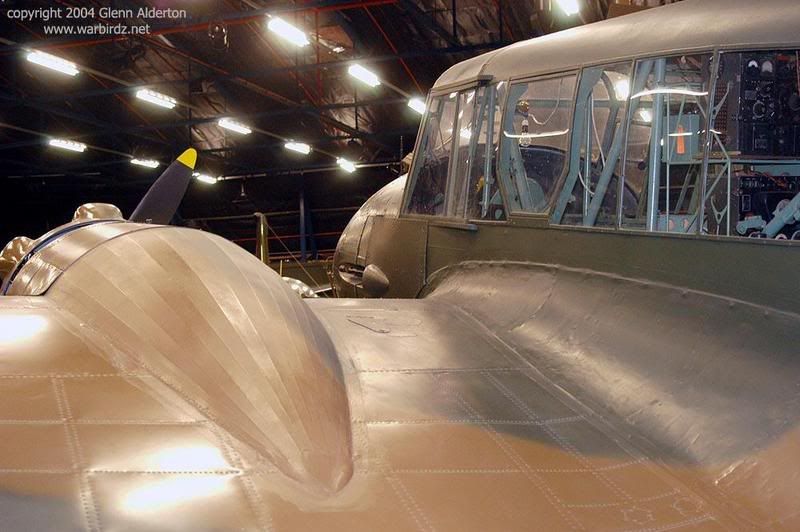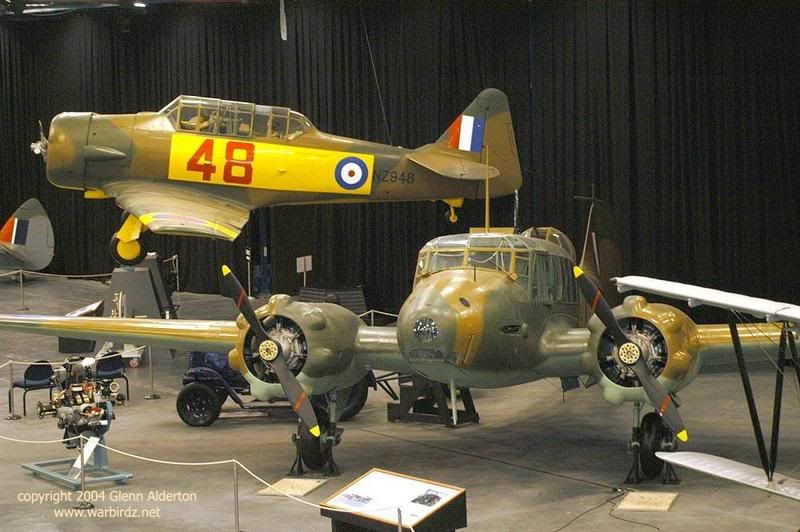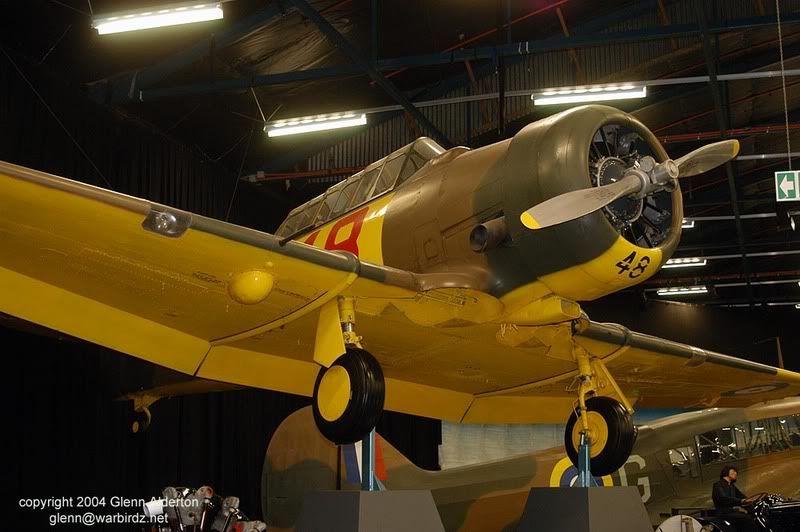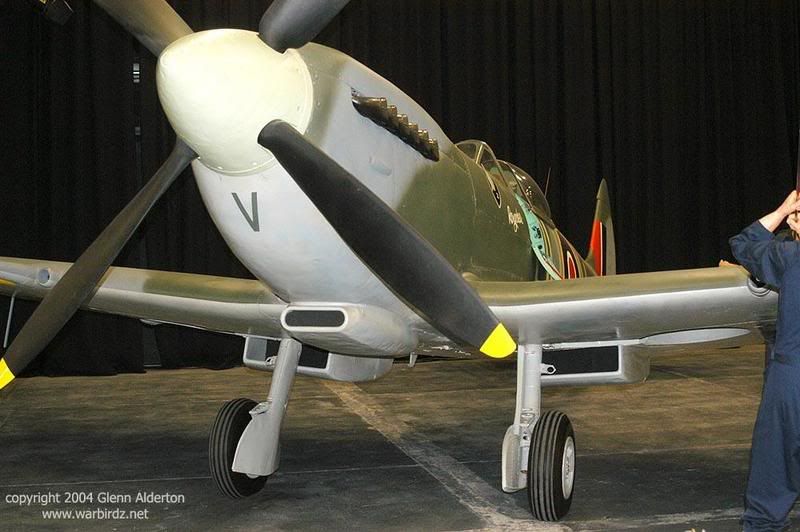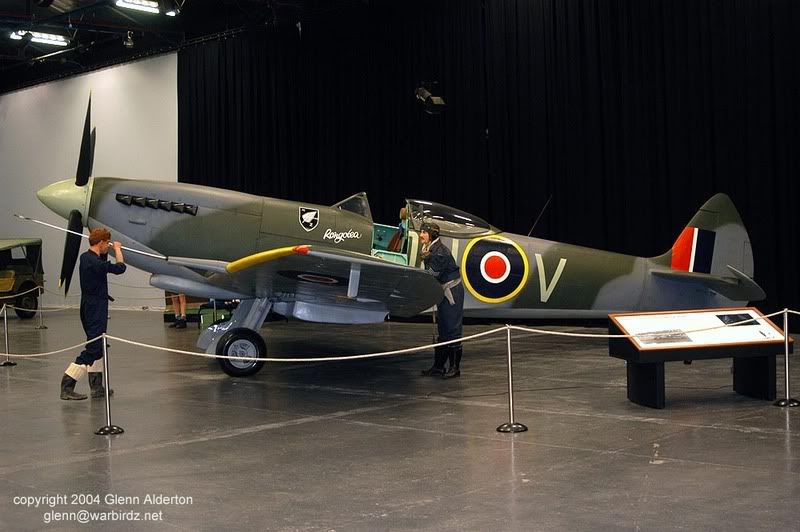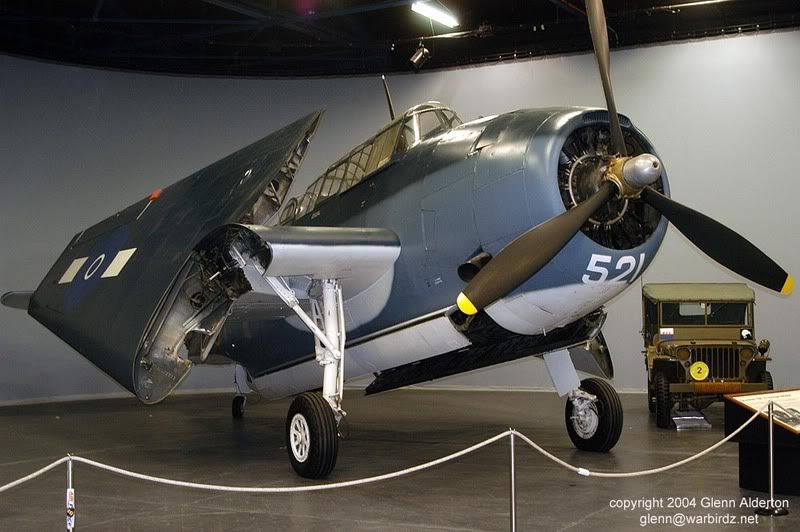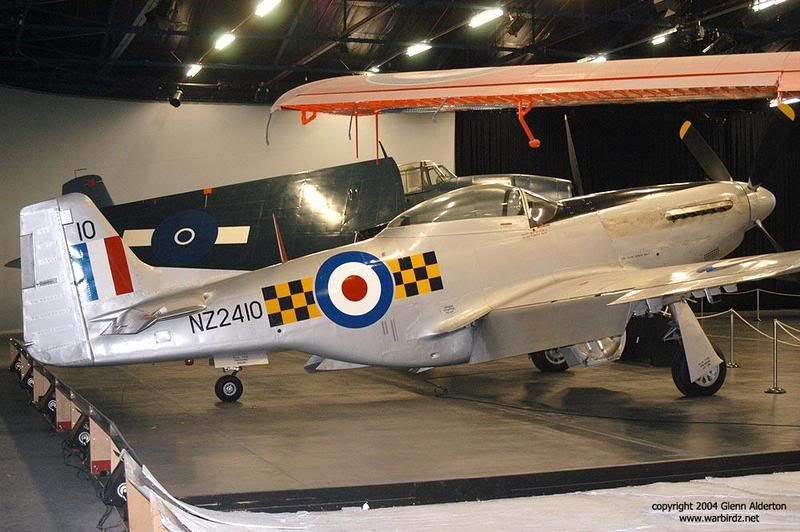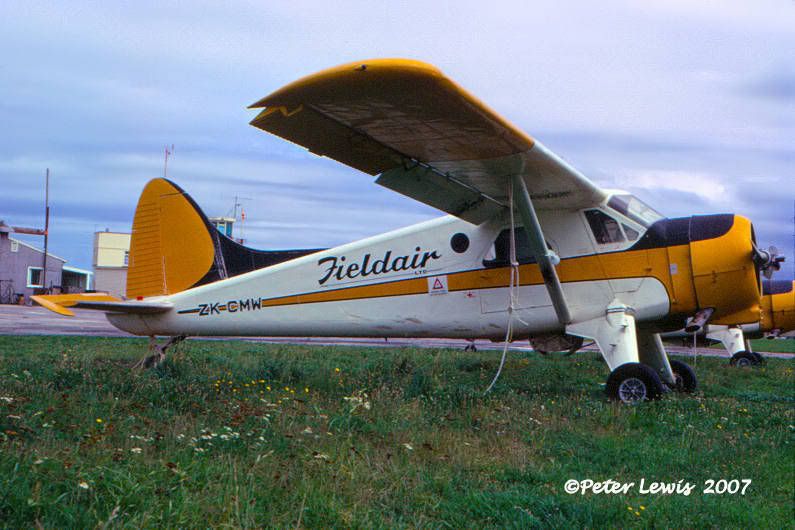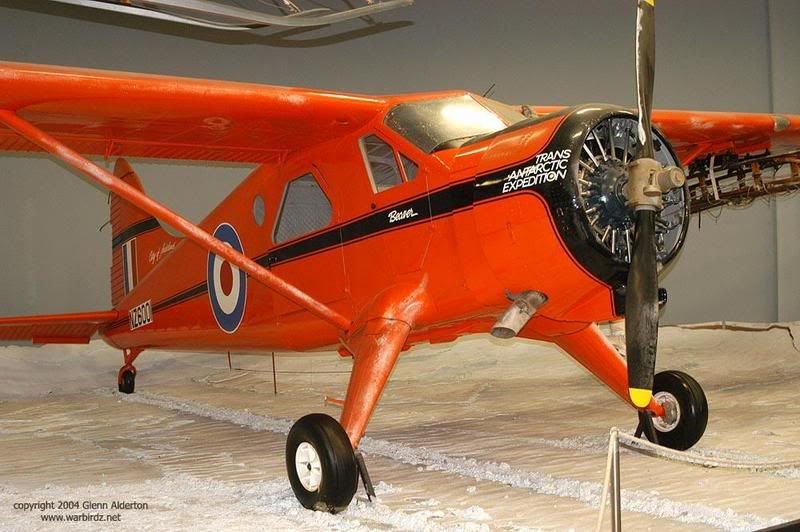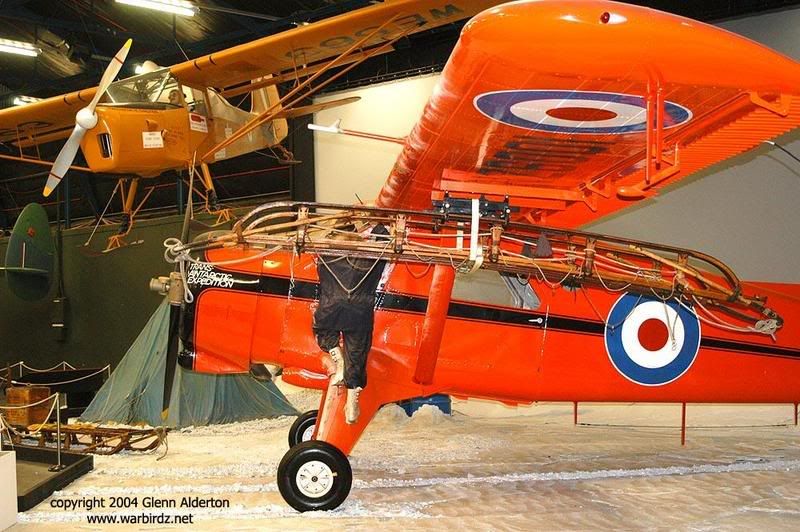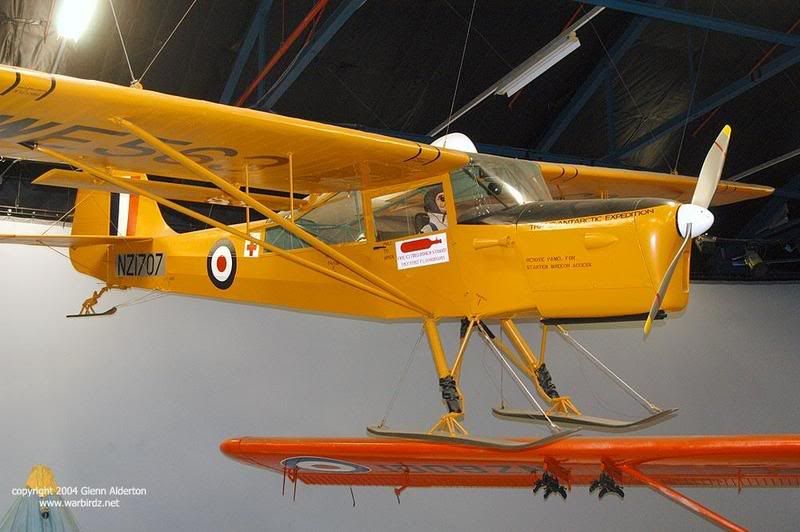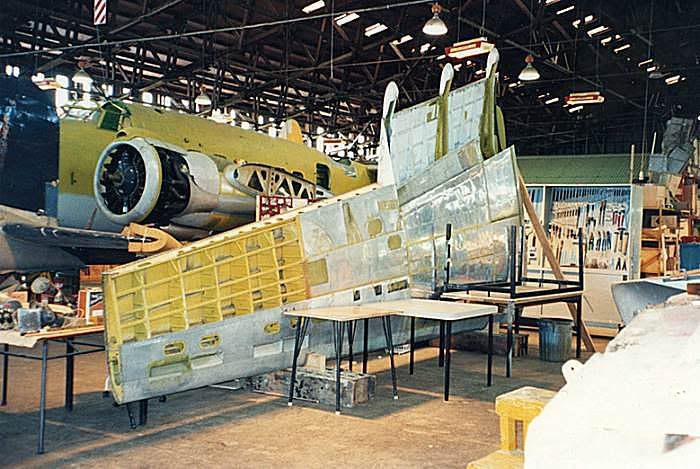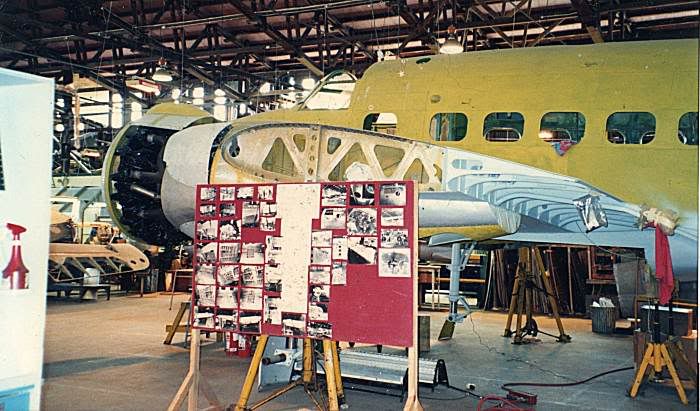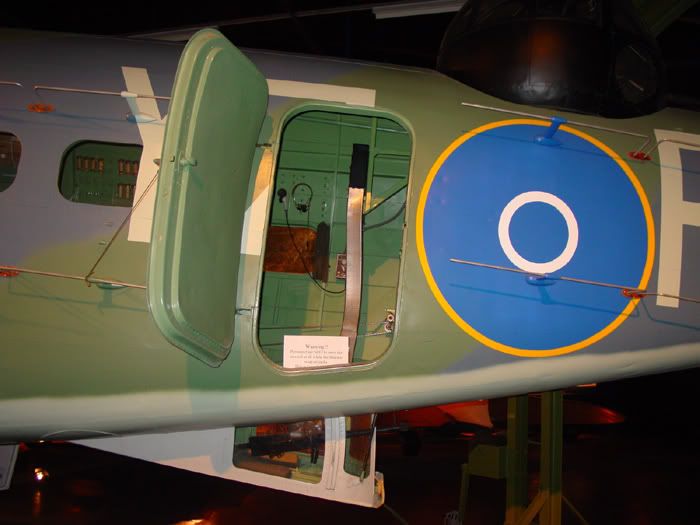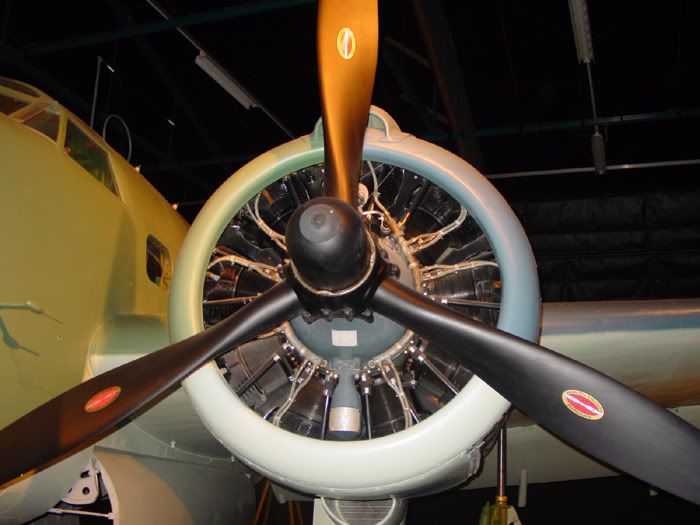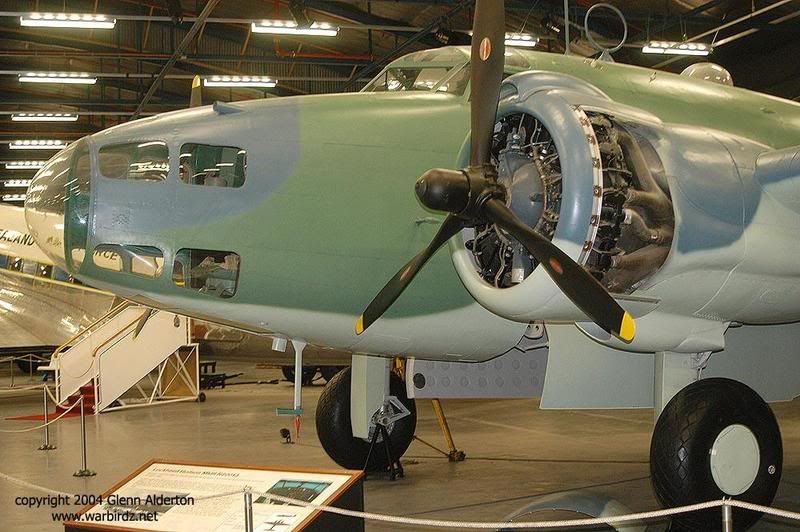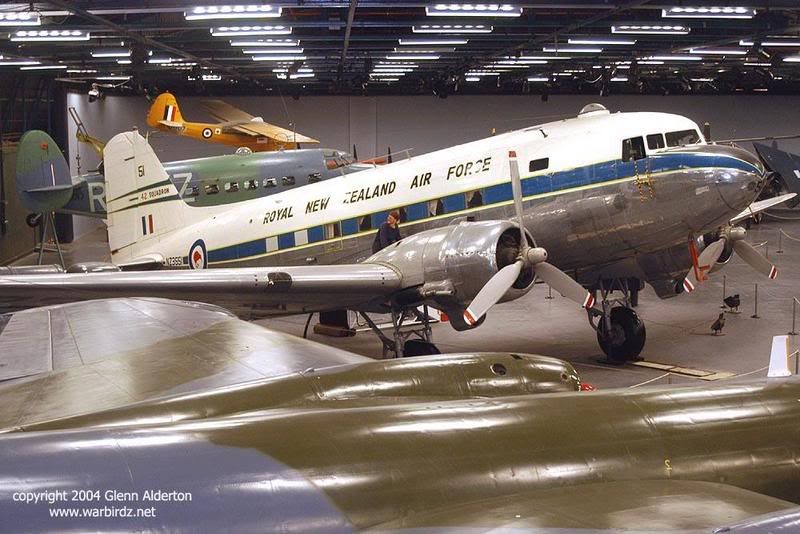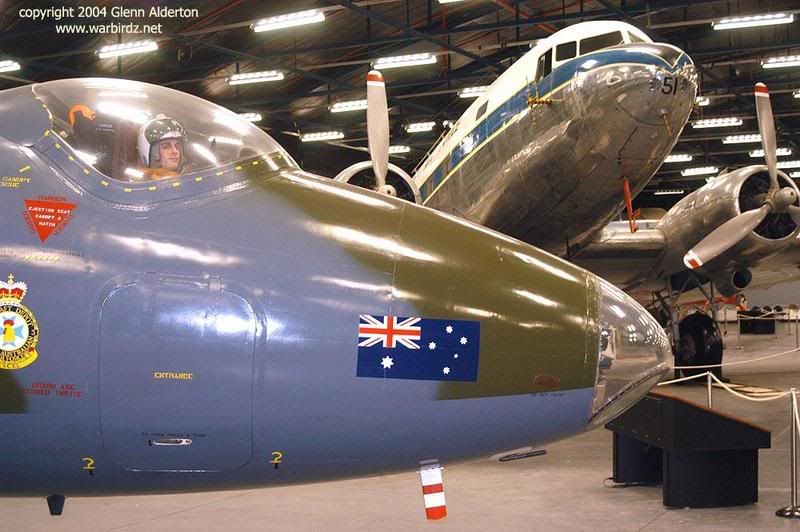
Royal New Zealand Air Force Museum
The RNZAF Museum Aircraft Collection
(No. 1 Hangar)
Avro 626
NZ203The only survivor of the type in the world, NZ203 is one of four Avro 626's purchased by the RNZAF in 1935. It was brought to New Zealand aboard the ship “Middlesex”, arriving at Lyttleton Harbour, Christchurch on the 25th of September 1935.
Assembled until early 1936, NZ203 was then allocated to No 1 Flying Training School, Wigram where it served with both prewar and the first half of World War Two. It was used as an advanced pilot trainer and also gunnery training aircraft. The Avros was also used for promotional displays around the South Island and on the 4th of June 1938, it was one of the air force's aircraft that took part in the first RNZAF Display at Rongotai, Wellington - possibly the only survivor from that event.
In June 1943, NZ203 was withdrawn from flying duties and became an instructional airframe (INST90) with the Hastings Air Training Corps, for ground training purposes.
In May 1947 the airframe was sold by the War Assets Realisation Board to Mr. Jim Frogley of Havelock North, Hawkes Bay, who put it back into the air, registering it in 1948 as ZK-APC. However he only ever flew it infrequently. One event of note during this time was when Frogley brought the aircraft out of its semi-retirement in 1958 and flew to Wigram to take part in the RNZAF's 21st birthday celebrations.
He subsequently dismantled ZK-APC later in 1958 and placed it back into storage on his farm at Havelock North. The registration was cancelled on the 23rd of August 1965, but later the aircraft was reinstated to the civil register, appearing on the 29th of March 1977 once again as ZK-APC. Frogley intended to return her to the skies, but he eventually decided that the RNZAF Museum may be better suited to do this.
ZK-APC was purchased from Jim Frogley in 1980 by the RNZAF Museum, and a lengthy restoration period began in November 1981 at RNZAF Base Ohakea. On the 8th of July 1985, ZK-APC flew again for the first time under the control of Wing Commander John Lanham. The civil registration was cancelled on the 23rd of August 1985, and once again she became NZ203.
The Avro 626 toured New Zealand that year under the auspices of the RNZAF Historic Flight, and was transferred to Wigram to take its position alongside the Flight's Harvard and Tiger Moth. Sadly engine problems grounded NZ203 for a time, and though Rolls Royce rebuilt the necessary parts for the very rare Cheetah engine and it could have flown on for many years to come, a decision was made to ground and display the rare Avro permanently in the museum.
Today it remains one of the prime attractions of the museum, being unique in several ways - including being the only 626 to survive intact, and the only prewar RNZAF aircraft in complete condition . It is also just a wonderful thing of beauty to gaze upon when you visit the museum
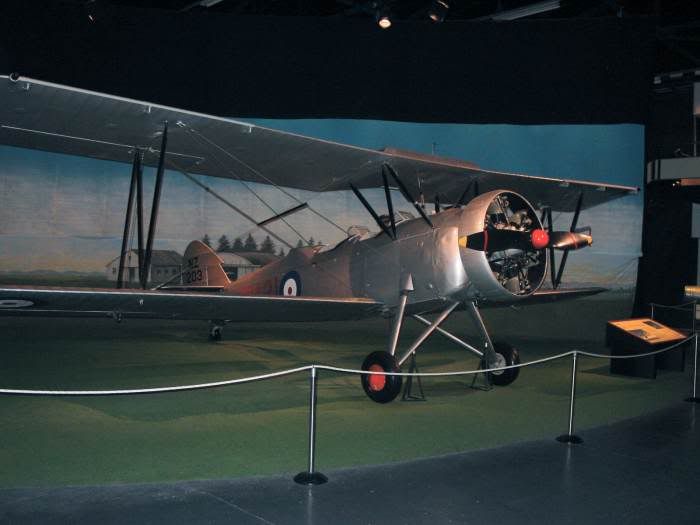
Above: Photo copyright Dave Homewood
The photo below was taken by Glenn Alderton. Note all his photos on this page were taken whilst
the lights were on in the Air New Zealand Aircraft Hall, a rare event for the public to see. The photos
give another interesting dimension to the aircraft and show more detail than is often seen in the
darker displays of the hangar. Glenn's photos are linked to his website too.Above: Photo copyright Glenn Alderton
Avro Anson Mk. 1
NZ406Twenty-three Avro Ansons served with the RNZAF from 1942-43 through till the last of the Anson fleet was retired in 1952.
The Anson was a British medium bomber that was used with varied success early in the war by RAF Coastal Command. However the type really came into its own when it was relegated to a training role, and many thousands of pilots, navigators, wireless operators and gunners trained in the type i across Britain, Canada, Rhodesia, Australia and New Zealand.
In the RNZAF their role was specifically training General Reconnaissance bomber pilots and navigators. The pilots had usually done a tour in the Pacific Islands as 2nd Pilot in a General Reconnaissance crew, and were returned to New Zealand to train in the Ansons to become 1st Pilots, or Captain, of the Hudsons and Venturas.
The School of General Reconnaissance began first at RNZAF Nelson as a Flight of No. 2 (GR) Squadron, flying Vickers Vincents and Vildebeests. The school soon moved to RNZAF Omaka, at Blenheim, where in July 1942 the Vickers biplanes were phased out of the school and replaced with the first batch of 14 Ansons that had arrived from Britain.
In June 1943 another batch of Ansons arrived to bring the total to 23, and the school was moved up to RNZAF New Plymouth to cope with the expansion. It was then that the school incorporated the training of navigators (previously done at Ohakea), becoming known as the School of General Reconnaissance and Navigation. Of course whilst on training flights the Ansons were also providing real seaward reconnaissance as a dual role, with patrols reaching well out into the Tasman Sea.
The aircraft on display is a composite aircraft made from many different Anson aircraft parts, although the fuselage is largely NZ415, which was previously LT376 with the RAF. NZ415 had arrived in New Zealand onboard the ship "Fordsdale" on the 12th of June 1943. It was brought on charge with the school on the 19th of July 1943, and given the code letter "Q".
Serving New Zealand till being declared surplus on the 17th of February 1952, NZ415 was sold by the Government to a farmer at Swannanoa, who went on to use the fuselage as a chicken coop. It was eventually discovered on the farm in 1975 by aircraft collector Phillip Burns, who recovered the airframe for restoration. He in turn passed the aircraft onto the RNZAF Museum.
As well as NZ415, parts from NZ410 and NZ422 were also used to rebuild the aircraft. And instead of the wooden wings of the Mk 1 Anson, the museum chose to source the metal centre section, mainplanes and tailplane from a late series Mk 19 from Britain, VL352, to complete the restoration.
The aircraft is displayed as NZ406 “G” of the School of General Reconnaissance, RNZAF Bell Block (New Plymouth), in 1943, though it is lacking the Toro The Bull noseart that NZ406 carried. Despite compromises made with the metal wings, this is a lovely restoration and a wonderful representation of the 'Gentle Annies' that trained so many men for the important work of General Reconnaissance and Bomber Reconnaissance.
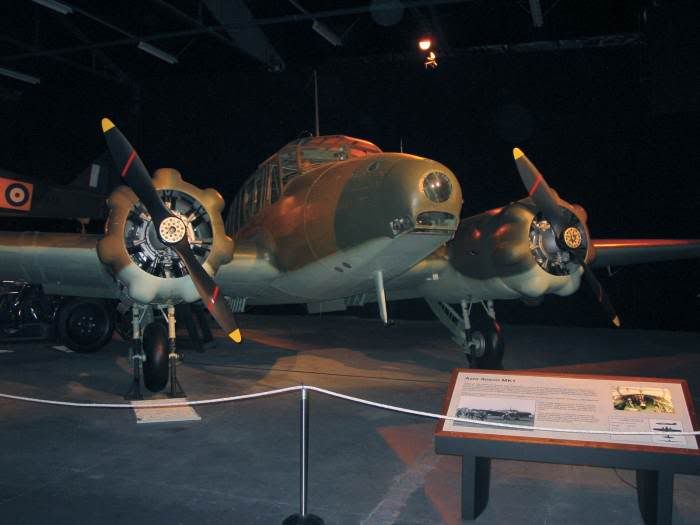
Above: Photo copyright Dave Homewood
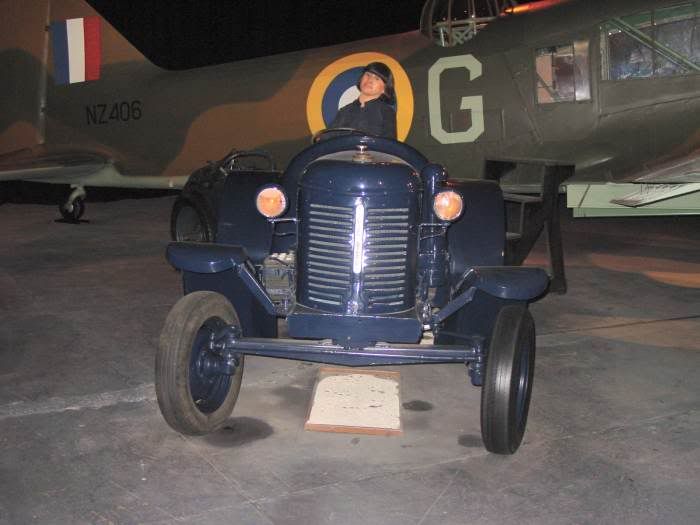
Above: Photo copyright Dave Homewood
Above: Photo copyright Glenn Alderton
Above: Photo copyright Glenn Alderton
Above: Photo copyright Glenn Alderton
Above: Photo copyright Glenn Alderton
North American Harvard Mk III
NZ1087 (as NZ948)The North American Harvard is probably the best known RNZAF aircraft type, thanks to many years service with the Red Checkers display team, and then beyond that with the civil Roaring Forties display team. Eventually 202 Harvards of various marks were taken on charge with the Royal New Zealand Air Force.
The first twelve Harvard II's arrived in New Zealand in March 1941, and were assembled at Hobsonville. These were American built aircraft, but to a British order so with British cockpit systems. In the USA they were known as the AT-6A. Of them, three (NZ901, 902 and 904) entered RNZAF service with the Central Flying School at RNZAF Tauranga to train instructors on the type.
The other nine were divided up issued to No's 1, 2 and 3 Service Flying Training Schools respectively at Wigram, Woodbourne and Ohakea. In June 1941 two more batches of Mk II Harvards arrived in NZ bringing the total in service to 67 aircraft, between CFS, and the SFTS's.
A further 38 Harvard II's arrived in January 1942, bringing total strength to 105 machines, which were designated as NZ901 through to NZ1005. Compared with the obsolete Gordons, Hinds, Vincents and Vildebeest biplanes they replaced at the Service Flying Training Schools at Wigram and Woodbourne, the two-seat monoplane Harvard proved powerful, comfortable and a very suitable lead in to the fighters like Kittyhawk, Corsair and Spitfire.
With the entry of Japan into the war, the RNZAF restructured itself into a defensive, and later offensive force, rather than simply a training institute for the Commonwealth Air Training Plan. This meant No. 3 SFTS at Ohakea disbanded so that station became an operational training unit, and No's 1 and 2 SFTS were expanded. Then in June 1942 Wigram became a completely multi-engined training station with Oxfords, while Woodbourne's SFTS training strength became 1/3rd multi-engined (Oxfords) and 2/3rds single-engine training with Harvards.
Thus most training Harvards moved to Woodbourne, with a peak of some 60 Harvards on strength operationally at 2 SFTS at one point.
In October 1943, the first of the RNZAF's new Mk III Harvards arrived. These all metal aircraft had a different electrical system from the Mk II, being 24 volt. They also had the US style cockpit layout as opposed to the British style Mk II that had been supplied under the Empire Air Training Scheme (or also known as the Commonwealth Air Training Plan).
These later model aircraft continued to arrive in New Zealand through till November 1944, though not all were Mk II's. The odd different model crept into the package, with the likes of NZ1070 being a Mk IIA which had a wooden rear fuselage (from a time when the manufacturer was having difficulty in sourcing necessary metal componentry, an issue later resolved by the time the Mk III's were being built). Also three Mk IIB models arrived (NZ1100, NZ1101 and NZ1102). These were Mk II's but built under licence in Canada by the Noordyn Aircraft Company. these were known in the USA as the AT-16.
By late 1944 the situation in the Pacific was going the Allies' way so No. 2 SFTS was closed down, and the Harvards moved back to Wigram. The CFS moved from Tauranga to Woodbourne to take the school's place, thus maintaining a small Harvard connection there.
Of course training at the SFTS's was not the only role for the Harvard in WWII. many were used as communications aircraft and there was hardly a station in the country that didn't have at least one Harvard attached for this purpose. The type also came into play as a fighter-bomber under the Forces Available For Anti-Invasion (FAFAI) Scheme, which saw guns and bomb racks fitted to Harvards (and other types) within training schools in case of Japanese invasion. The instructors would have been their brave pilots, in a desperate, perhaps suicidal, attempt to stem an invasion force.
Harvards also served with No. 2 (Fighter) Operational Training Unit at Ohakea, and No. 14 (Fighter) Squadron at Hood Aerodrome, Masterton. Others served as trainers for dive bomber squadrons, on strength with No. 25 Squadron at Seagrove (and later No. 26 Sqn there), and No's 30 and 31 Squadrons at Gisborne.
By war's end most of the 150 surviving Harvards were withdrawn to storage. All the Mk II's and most Mk III's went to Wigram to be stored, while the Mk IIA's went to Ashburton to await their fate. The MkII's never flew again, (apart from NZ1004 for a short period) and many became instructional airframes.
In 1949 however the Compulsory Military Training Scheme saw the Mk III Harvards return to service at Wigram, after an overhaul at No. 1 Repair Depot, Woodbourne. And the four Territorial Air Force squadrons (No. 1 Sqn at Whenuapai, No. 2 Sqn at Ohakea, No. 3 Sqn at Wigram and No. 4 Sqn at Taieri)were issued with Mk IIA's from Ashburton.
From 1953 the MkIII's were again withdrawn, replaced by the Mk IIA's which had now been modified to Mk IIA* standard. From 1955 when the TAF Mustangs were withdrawn some of the stored MK III's were issued to the TAF, serving till 1957.
Then the TAF disbanded and the Mk III's went to Woodbourne for overhaul. The Mk III's then replaced the Mk IIA*'s at Wigram, which all went into storage apart from the odd station hack and a handful with No. 42 (Communications) Squadron.
In 1959, the 59 surviving Mk II's (which had not been active at all and were used for training purposes or stored) were sold to Bennett Aviation at Te Kuiti for scrapping. Parts of these aircraft were later used in the Bennett Airtruck topdresser, a short lived venture that had little success. Others from the scrap yard ended up in park playgrounds, such as in Tauranga, Takapau, Pahiatua, and Methven, and one still resides in the Museum of Transport and Technology. others have survived elsewhere.
In 1977 the Mk III harvards were finally withdrawn and replaced by the NZAI Airtrainer. At this point most were stored for a short time then tendered for disposal, and good numbers went into private hands, where today well over a dozen remain active today, and many more in Australia.
In over 36 years that the Harvard graced New Zealand's skies as a military aircraft, it served in many roles as well from training new pilots, bombing and gunnery trainer, communications aircraft, fighter lead in trainer, actual defensive fighter-bomber in desperate times, forward air control aircraft, army co-operation, fire spotter for forestry, and airshow display team aircraft. They became a legend in their time and that legend continues to this day thanks to the likes of the New Zealand Warbirds and Commemorative Air Force organisations, and other collectors and operators.
The particular Harvard found in the RNZAF Museum, nicely displayed up on poles as if on final approach before touchdown at Wigram, is actually a Mk. III Harvard NZ1087, but it is painted to represent an earlier Mk. II, NZ948.
Interestingly the real NZ948 survived the war, just, via the famous Bennett scrapyards where many Harvards met their fate. Its fuselage passed to Charles Darby, and today it is with P. McQuarters of Ashburton where it's apparently being restored to static condition, which may be a little confusing when there are two aircraft marked as NZ948. The real NZ948 served with No.1 SFTS at Wigram in WWII, before becoming an instructional airframe at Woodbourne.
NZ1087 on the other hand was shipped to New Zealand aboard the ship "Sunnyside Park" in June 1944 and was assembled at RNZAF Hobsonville. It was Brought on Charge on the 5th of July 1944.
NZ1087 became the fifteenth Mk III to be converted to Mk 3* between May and November 1957. It then served with No.1 (Territorial Air Force) Squadron, based at Whenuapai, from the 12th of September 1955 till the 22nd of August 1957.
The aircraft then went into storage at Wigram in July 1962, but at some point it became active again, flying with the Pilot Training Squadron or perhaps Central Flying School at Wigram. Among its many hours of training new pilots, NZ1087 took part in a couple of landmark events for the RNZAF, one being the Harvard 30th Anniversary Flypast over Christchurch on the 22nd of March 1971. The other was the final Harvard Flypast over Christchurch on the 24th of June 1977, when the fleet was withdrawn from service after replacement by the Airtrainer.
Once retired from training purposes NZ1087 was converted to become instructional airframe INST213 with No.4 Technical Training School at RNZAF Woodbourne in June 1977. It would have been used for training the aircraft mechanics and technicians there. The February 1981 issue of New Zealand Wings magazine shows a photo for NZ1087 later being rolled out following restoration by No. 4TTS cadets to its wartime paint scheme (as seen on it today in the camouflage with yellow panels). However at that point the aircraft wore its real serial of NZ1087 and its large buzz number on the yellow fuselage panels was 187.
The Harvard returned to Wigram October 1981 for display at the RNZAF Museum (the RNZAF Museum's own booklet states 1984 however). It arrived at the Museum in complete condition from Woodbourne and was ground run to inhibit the engine. It was then displayed initially wearing its true identity of NZ1087, but it was later repainted as NZ948. Prior to being placed in the Air New Zealand Aircraft Hall building (No. 1 Hangar) in 1987, the engine and propeller were removed and replaced with static examples.
Above: Photos copyright Glenn Alderton
Supermarine Spitfire Mk XVIe
TE288The most famous fighter aircraft in the world, the Spitfire is a legendary aircraft and one that many New Zealanders flew and worked on in Britain and other theatres of war in World War Two. New Zealand had it's own Spitfire squadron, No. 485 (NZ) Squadron, which was based in the UK and took part in many hundreds of missions across Europe. Among its members were many top pilots, some of them aces, and these included Edward 'Hawkeye' Wells and Johnny Houlton.
This particular Spitfire in the museum is a Merlin-engined Mk XVIe with the lowback configuration. No. 485 Squadron flew this mark of Spitfire late in the war and this example, though it never flew with the New Zealand squadron, is painted to represent a 485 Squadron example.
Though it's not wearing any markings to indicate it, this Spitfire is serial coded TE288. Following its construction, it was taken on charge by No. 9 Maintenance Unit, at RAF Cosford on the 1st of June 1945, where it went into short term storage. It then served briefly with No. 61 Operational Training Unit at RAF Keevil. Whilst there it was damaged in a flying accident and required repair work.
After returning to the air the Spitfire was allocated on the 5th of November 1946 to the Royal Auxiliary Air Force's No. 501 Squadron at RAF Filton. With this unit it was coded RAB-D. On the 14th of November 1948the aircraft was again placed into storage, and remained there till the 18th of April 1951 when it was issued to No. 102 Fighter Refresher School at North Luffenham. This was followed by a move in July to No. 103 Fighter Refresher School.
In October 1951 TE288 went back into storage with No. 33 Maintenance Unit at RAF Lyneham, and it was declared non-effective on December 13 1954.
The aircraft was used as a prop in the movie "Reach for the Sky" in 1955. It then became a gate guard at RAF Rufforth from 1955-59, RAF Church Fenton (1959-61), and RAF Dishforth (1961-63). Put up for disposal, the aircraft was successfully balloted for by the Canterbury Brevet Club, based in Christchurch, New Zealand.
The aircraft was shipped to New Zealand, arriving at Lyttelton on the 28th of June 1963. It was displayed at the Canterbury A&P show, and then stored at RNZAF Station Wigram. On the 3rd of March 1964 the aircraft was mounted outside the Canterbury Brevet Club clubrooms at Harewood, Christchurch, where it became known as something of a landmark. The Spitfire was beside the roundabout where the road entered Christchurch International Airport, and so was seen by many thousands of people each year.
In 1984 the members of the Canterbury Brevet Club donated the Spitfire to the RNZAF Museum. On the 5th of March 1984 it was removed from the pole and transported to RNZAF Base Woodbourne, where a fibreglass mould was taken from the aircraft. A replacement replica from the mould was constructed by the RNZAF, and looking virtually identical to the original, was mounted in its place at Harewood on the 9th of August 1984. This was soon afterwards catastrophically burned by an arsonist, and a second replica was made by the RNZAF. At least three other replicas have been created from the moulds too, one of which can be seen in Hamilton's War Memorial Gardens on River Road.
Meanwhile the real Spitfire was completely restored back to pristine condition at No. 1 Repair Depot, RNZAF Woodbourne, under a team lead by Sgt Alan Woodley (who later went worked on the RNZAF Museum Restoration Flight). This took around 18 months over 1984 and 1985. When finished the aircraft went down to Wigram to be installed in the RNZAF Museum in the colours of "Rongotea", a Mk XVIe lowback Spitfire of No. 485 (NZ) Squadron which was coded OU-V, circa May 1945.
Above: Photos copyright Glenn Alderton
Grumman TBF-1 Avenger
NZ2504The Grumman Avenger was designed as a torpedo bomber and used to great effect by the US Navy in the Pacific War, and the Royal Navy in various theatres as such. However the RNZAF used 48 of the type in a multitude varying roles, except torpedo bombing.
The RNZAF's main use for the Avenger was as a dive bomber. They were used by No's 30 and 31 Squadrons, RNZAF, as such in New Zealand and the Pacific. They carried out coastal reconnaissance from Gisborne whilst based there, and were involved in many strikes against Japanese positions in the Pacific war zone.
After the war they were used as target tugs, and as experimental aircraft, most notably for the trials conducted by the RNZAF in aerial topdressing.
The example on display in the RNZAF Museum is actually NZ2504, which arrived in New Zealand aboard the "William Keith". It was assembled by No.1 Aircraft Depot at RNZAF Station Hobsonville, and was Brought On Charge on the 21st of September 1943 with Unit 36, Hobsonville. Once assembled and tested, it was delivered to No.30 Squadron, at RNZAF Station Gisborne on the east coast of the North Island, on the 12th of October 1943.
This aircraft was built as aTBF-1, and though it was classed as a TBF-1C by the US Navy, it was considered sufficiently different by the RNZAF for them to not use this example on operations, so it became purely an operational training aircraft with No. 30 Squadron.
When that squadron moved up to the Pacific, another Avenger squadron, No. 31 Squadron formed at Gisborne, and NZ2504 was allocated to that unit. Later 31 Squadron also went up to the Pacific but NZ2504 did not. It may have become a target tug at this point, or possibly just stored. It was certainly stored after the war till June 1948, when it was revived and made airworthy again. It returned to the air on the 28th of July 1948 with the General Purpose Flight at RNZAF Station Ohakea. This is when it was converted with a special hopper and used to test the concept of aerial topdressing at Masterton.
On the 23rd of May 1949, following the topdressing trials, the Avenger flew to RNZAF Whenuapai (probably to have the hopper removed and target tow equipment added), and later returned to Ohakea and joined No. 42 Squadron on the 17th of November 1949 as a target tug. It continued in this role for almost ten further years, and made it's final flight (Ohakea to Hamilton) on the 30th of June 1959, where it became the gate guard at RNZAF Station Te Rapa. It was converted to become instructional airframe INST 182 at this point on the 10th of July 1959. However, being a gate guard, it remained in its RNZAF target tug colours and never wore its INST number.
In 1978 the RNZAF Museum was allocated the Avenger and it was transported to Lyttleton harbour aboard a RNZN frigate. It was then road transported to RNZAF Base Wigram. It underwent restoration by a volunteer team lead by Flight Lieutenant Paul Harrison (now the Editor of RSA Review magazine by the way), and other volunteers included Flight Lieutenant Kel Aldridge, Sergeant George Jaunzemis, Sergeant Pete Tolhoek, Corporal Trevor Wood and a number of others including Air Training Corps cadets who helped out at weekends.
Eventually the team had it looking pristine again and did regular engine runs on the aircraft. The wing folding mechanisms were restored to operable, and in fact by 1980 they had the aircraft taxiable, and when the Wigram base Commander, Group Captain G.C. Hubbard, retired the Avenger taxiied him along the base flightline as a salute to the work he'd put in to help establish the RNZAF Museum
Later when the new Museum complex was built, it was decided to change the aircraft from its target tug colour scheme to that of a wartime Pacific RNZAF example. The colours of another aircraft were chosen as NZ2504 had not seen any Pacific action, and so the markings of NZ2521 were applied. This was an aircraft which failed to return from a raid whilst bombing a Japanese position with No. 31 Squadron, with the loss of all three crew on their first operational mission.
After many years of display in the Museum's No. 1 Hangar, the Avenger moved for a period to No. 3 Hangar, but had returned to its original No. 1 Hangar position, albeit with wings now folded, by the mid-2000's. This was the largest single-engined aircraft used by the RNZAF and remains a popular and impressive part of the collection at Wigram.

Above: Photo copyright Marcus Bridle
Above: The Avenger NZ2504 in its early days with the Museum. Photo from Marcus Bridle
Above: Photo copyright Glenn Alderton
Above: And nowadays in the museum painted as NZ2521
North American P-51D Mustang
Replica of NZ2417The P-51D was one of the most famous fighters of World War Two. Designed for the Royal Air Force by North American Aviation, the Mustang was unsuccessful till it was fitted with the Rolls Royce Merlin engine. It then became one of the best long range escort fighters of the war. Many New Zealanders in the RAF and at least one in the USAAF flew the Mustang, mostly the highback P-51B and P-51C versions. The 'D' model had the bubble canopy and became the classic design standard.
The RNZAF ordered P-51D Mustangs to replace their fleet of Corsair fighters, but by the time the first 30 had arrived in New Zealand the war was over, and orders for any further were cancelled (several hundred would have joined the RNZAF had the war not ended, as all the fighter squadrons were to re-equip with them).
Rather than go straight into service, the 30 Mustangs were put into storage at RNZAF Station Ardmore in south Auckland. It was not till 1951 that they were brought out of storage and activated. The majority of them went to the Territorial Squadrons of the RNZAF, which up till this point had been flying Harvards and Oxfords. These squadrons were No. 1 (TAF) Squadron based at RNZAF Station Whenuapai; No. 2 (TAF) Squadron based at RNZAF Station Ohakea; No. 3 (TAF) Squadron based at RNZAF Station Wigram and No. 4 (TAF) Squadron which was based at RNZAF Station Taieri. Additionally a small number of Mustangs served as target tugs with No. 42 Squadron at Ohakea, and as reserve aircraft.
Together with the Vampires of No's 14 and 75 Squadron the Mustangs formed an effective defensive fighter force for New Zealand till they were withdrawn from service in 1955 when the Territorial Air Force's fighter squadrons were disbanded.
A handful of genuine ex-RNZAF Mustangs have survived. NZ2423 remains in the static collection owned by Mr John Smith of Mapua. A few more aircraft and/or component collections were purchased by Mr Peter Coleman of Blenheim and remained with him till his death, at which stage most went to the Alpine Fighter Collection and were sold on to the UK. One was NZ2427 which was restored in the UK by Maurice hammond and today flies with a spurious US colour scheme and the name Janie. NZ2406 and NZ2429 are also being combined into one and rebuilt to fly by Mr Phillip Warner.
Most of the rest of the NZ Mustangs were sold to orchard owners in the Mapua and Upper and Lower Moutere region of Nelson, where their wheels were used for trailers and their engines and propellers mounted onto the trailers to tow them through the orchards running on frosty mornings, to blow frost off the crops.
Only NZ2417 was to continue a flying career in New Zealand, after restoration that included NZ2409's wings. Bought by Ron Fechney, he and a team got it flying as ZK-CCG. Sponsored by Mobil, this became NZ's first proper warbird and displayed at airshows around new Zealand rom November 1964 till 1968 when it was deemed to expensive to fly. In April 1974 ZK-CCG went to the USA, and now is part of the famous Kermit Weeks collection painted as "Cripes A'Mighty 3rd". It is registered N921.
Three other flyable Mustangs have come to New Zealand and been operated as warbirds since the mid-1980's, one being ZK-TAF which operates in the scheme of NZ24
When the RNZAF Museum decided it needed a P-51D Mustang to display and represent the Territorial Air Force days of the 1950's, there were no genuine examples available, so a substitute was sought from abroad. A deal was done by the RNZAF Museum with the Indonesian Air Force in 1985. They swapped NZ5708, a DH115 Vampire T.11, for the former IAF Cavalier F-51D (c/n 122-41367 ex 44-72487, 72-1541, F367).
The Museum's Mustang was originally built as a P-51D-30NA at Inglewood in California, USA. It was converted by the Cavalier Aircraft Corporation to F-51D specification for the USAF as part of the Military Assistance Programme. The Indonesians had operated eight of these F-51D as COIN aircraft from 1973. By 1975 most were unserviceable, and they were withdrawn and replaced by the OV-10F in September 1976.
Upon arrival in April 1985, the Mustang was restored back to P-51D configuration by a team at RNZAF Base Ohakea on behalf of the RNZAF Museum. The team included Flight Sergeant Bruce Ricketts, Flight Sergeant Ali Iggo (who was the NCO i/c on the project), Sergeant Eddy Gurgol, Corporal Doug Gilmore and Sergeant Mike Corbett. Valuable assistance was also leant to the team by Mr Nigel Browning, who had worked on P-51D Mustangs during World War Two. It was reported in New Zealand Wings in May 1987 as having been restored to an airworthy standard. It was placed into the museum shortly before it officially opened in April 1987.
The paint scheme chosen for this exhibit was that of NZ2410 which had served with No. 2 (TAF) Squadron and had been based at RNZAF Station Ohakea.

Above: Photo copyright Marcus Bridle
The photo above, submitted by Marcus Bridle, shows the Mustang shortly after its
arrival in New Zealand from Indonesia.Above: Photo copyright Glenn Alderton
de Havilland Canada DHC-2 Beaver
Replica of NZ6001The Beaver in the RNZAF Museum represents the one and only Beaver that saw RNZAF service, with the Antarctic programme. The genuine item was purchased for the RNZAF in 1956, arriving at Hobsonville for assembly in July of that year. It was given the serial number NZ6001, and on the 11th of August 1956 it flew down to Wigram to begin preparation for its role in Antarctica.
In December 1956 returned north to Ardmore where in a ceremony the aircraft was officially dubbed "City of Auckland", this legend being painted onto the tail fin. The Beaver was then loaded aboard HMNZS Endeavour at Devonport and transported south for its first trip to the ice continent. It's first flight in Antarctica occurred on the 13th of January 1957 and it continued to be used for various roles throughout the summer season of 1957. I believe it was wintered over at Scott Base and reactivated for the summer of 1957/1958. During this period the Beaver's regular RNZAF pilots were Squadron leader John Claydon and Flying Officer Bill Cranfield.
In October 1958 the Beaver returned to New Zealand, this time by air, as cargo inside a US Globemaster aircraft. In August 1959, having been in service for three years, someone realised that the serial number it wore, NZ6001, had already been previously allocated in 1946 to the RNZAF's sole Gloster Meteor. So it was changed to NZ6010 to avoid any future confusion with the jet.
After the Beaver had remained in New Zealand for over a year it returned south to the ice aboard the USS Atka. It arrived at New Zealand's Scott Base on the 17th of December 1959. However shortly afterwards on the 15th of January 1960 the aircraft was destroyed in an accident. In whiteout conditions, the plane had been flown straight into the side of a valley on the Beardsmore Glacier. When Scott Base could not raise the two crew members by radio, the US Navy squadron VXE-6 sent out helicopters to search for them. They searched for days. Eventually on the 20th the rescuers heard a faint radio call, and they discovered that both crew were safe and well, and had survived their plunge into the ice without injury. They were winched aboard a helicopter (some sources state RNZAF Auster NZ1707 rescued them) and taken back to base.
However the Beaver was a write off. Its remains were never recovered and nowadays the valley where it came down is marked on maps as Beaver Valley.
The Beaver at Wigram is a de havilland Canada DHC2 Beaver Mk1, like the genuine example was. It's constructor's number is c/n 1084, whereas the real one was c/n 911. The museum's Beaver has a long history in aerial topdressing and was first registered as VH-AAL in Australia in December 1957, where it flew with Aerial Agriculture Pty. Ltd. In January 1963 it changed hands to Robby's Aerial Services Pty, in Western Australia.
The Beaver crossed the Tasman Sea to New Zealand and joined Air Contracts Ltd. of Masterton, being delivered to that company on the 4th of September 1965. It was added to the New Zealand Civil Aircraft Register as ZK-CMW at this point.
On the 3rd of February 1969, the Beaver was purchased by Fieldair Ltd., at Gisborne, which was one of NZ's largest topdressing companies. It continued in the role of topdressing till it's last flight on the 14th of July 1975. By this time it had amassed 8914.55 flying hours. It was withdrawn from use at Gisborne.On the 18th of November 1980 the aircraft was shifted to Fieldair Holdings (Central) Ltd. at Palmerston North but remained out of service.
Its registration was finally cancelled on the 30th of March 1984, and at around this point Fieldair donated the Beaver to the RNZAF Museum at Wigram, arriving there during 1985. It was painted up to represent the sole RNZAF Beaver in its earlier days while numbered NZ6001.You can see some photos of the Beaver both at Wigram and in its Australian days here
Thanks to Peter Lewis for his valued assistance on the topdressing history of the RNZAF Museum's Beaver.
Above: Photo copyright Peter Lewis
Above: This is the Beaver now in the RNZAF Museum. The photo was taken by Peter Lewis
whilst ZK-CMW was in service at Gisborne with Fieldair, on the 17th of March 1973.
.Above: Photo copyright Glenn Alderton
Above and below is the Beaver as it is today in the Museum.
Above: Photo copyright Glenn Alderton
Auster T7C Antarctic
NZ1707This is the one and only genuine RNZAF Auster Antarctic on display in the museum. It had previously been a reserve aircraft with the British Antarctic Expedition during early 1950's and was purchased by the New Zealand Government for the RNZAF in May 1956.
Shipped to NZ and reassembled at RNZAF Station Wigram in July and August in 1956, it first flew as NZ1707 on the 7th of August.
The crew began training for Antarctic service in the Auster at Tasman Glacier in the South Island. However it came to grief when the aircraft flipped onto its back on the glacier on the 19th of August 1956. Damage was slight and it was repaired in situ before flying a back to Wigram on the 31st.
On the 17th of December 1956, the Auster set off for the Antarctic aboard HMNZS Endeavour. It first flew in the Antarctic on the 29th of January 1957 and was shipped back to New Zealand in early 1958. The aircraft was used for two further Antarctic seasons without incident.
When it was replaced in the Antarctic Programme by the DHC Beaver, the Auster went to Flying Training Squadron at Wigram in August 1962 (in wheeled configuration, as opposed to skis and floats in the Antarctic missions).. In 1963 the aircraft was moved to No.1 (Reconnaissance) Squadron and later to to No.3 (Battlefield Support) Squadron to fly in Army Co-operation work.
The Auster crashed into the Kaipara Harbour on the 22nd of August 1966, however the pilot was unhurt. It was lifted from the water and returned to Hobsonville by an RNZAF Iroquois, but the damage was considered too costly to repair at the time, and the aircraft was written off the books. It was then restored by trainees at No.1 Technical Training School, at Hobsonville, and presented by the RNZAF to the Museum of Transport and Technology (MOTAT). Later the RNZAF Museum did a deal to swap the historically significant NZ1707 with for Auster J-1B ZK-BWH, which had no military service in New Zealand.
NZ1707 is now displayed hanging in the RNZAF Museum in a display depicting the New Zealand Antarctic Programme.
Above: Photo copyright Glenn Alderton
Lockheed Hudson Mk. III
NZ2013The remains of Hudson NZ2013 arrived at the RNZAF Museum in early March 1985. The airframe consisted of a basic fuselage which had seen several years as a chicken coop on Jim Clarke's farm near Oamaru.
New Zealand Wings noted in May 1976 the following, "Finally, at Rutherford, near Oamaru, Hudson NZ2013 presents a forlorn sight lying on its side at the new home of owner Jas. Clarke. After selling his old farm, on which the aircraft was a well-known landmark and chicken-coop, Mr Clark has taken the aircraft to his retirement place, and expresses hope that he will restore it."
Mr Clarke, who had purchased the aircraft on the 9th of May 1949, under tender WARB/9201 from RNZAF Station Taieri. he then removed it to his farm at Maheno, Gardiners Valley, near Oamaru in the South Island, .
It was to spend a period as a hen house on his farm, and as it was situated near a road it became something of a local icon for passers by.
Mr Clarke decided to put the aircraft up for sale in 1982, for $19,000, due to deterioration where it was displayed outdoors by the roadside. Despite interest from US buyers it remained unsold. The RNZAF also showed interest but the price tag was too high.
Then the Air Training Corps and other groups began to fund raise on behalf of the RNZAF Museum. It was purchased in 1984 and recovered by the RNZAF that year. I assume it went into storage at RNZAF Base Weedons at that time, at the the RNZAF Museum's storage facility.
The airframe was then shifted to RNZAF Base Wigram during 1985, and restoration began in 1987. This is where the RNZAF's other Hudson fuselage came in. Some years previously to the purchase and arrival of Hudson NZ2013 at Wigram , another Hudson fuselage had been acquired by the RNZAF Museum. New Zealand Wings magazine noted in its news page for the August 1981 issue that,
"A Lockheed Hudson fuselage and engines has been donated by Mr K. Pennell of Kaiangaroa."
This I think, but maybe wrong, was the fuselage of Hudson NZ2084. Whilst NZ2013 was being restored there certainly was a second fuselage present which I recall seeing on several occasions tucked away on the left side of the hangar when you looked in the door. This, I was told by a couple of staff members, was being used as a source of parts and as a source of patterns for the restoration of NZ2013. One Corporal who worked in the Restoration Flight also told me it had previously been used as a prop in the New Zealand television series "The Sea Urchins", a kids' adventure series which starred Rebecca Gibney in her first ever role. It had apparently been sunk in some water and played the part of a WWII bomber discovered crashed by the kids in the series. I know very little else about the fuselage
Actually Hudson NZ2013 was restored using parts from various other aircraft, especially the fuselage of NZ2084 and the wings of an unknown example which had come from the Blenheim area, where they'd been used as the roof of a farm shed.
Some of the tail now on NZ2013 came from a Lockheed Lodestar, ZK-AKX, recovered from that aircraft's 1949 crash site in the Tararua Ranges.
The beautiful and painstaking restoration of the Hudson was finally completed to pristine condition in 1996 and placed on display at the RNZAF Museum on the 17th of July 1996. It now must represent the most complete example of the type extant today with the exception of the flying example at Temora in Australia. It is certainly the most complete example in New Zealand, the others being located at the Museum of Transport and Technology in Auckland (NZ2031), the Ferrymead Aeronautical Society, Christchurch (NZ2035), and the John Smith collection (NZ2049). What became of the second fuselage thought to be NZ2084 remains a mystery - it was loaned to the Aviators Gallery in Christchurch, but this has subsequently closed down and some reports state that the fuselage was later scrapped! I hope not.
The Ohakea Museum also has/had a top section from another mystery Hudson fuselage.
Here are some photos I took during the restoration of the Hudson which date from about 1992 or 1993, in No. 7 Hangar at RNZAF base Wigram.

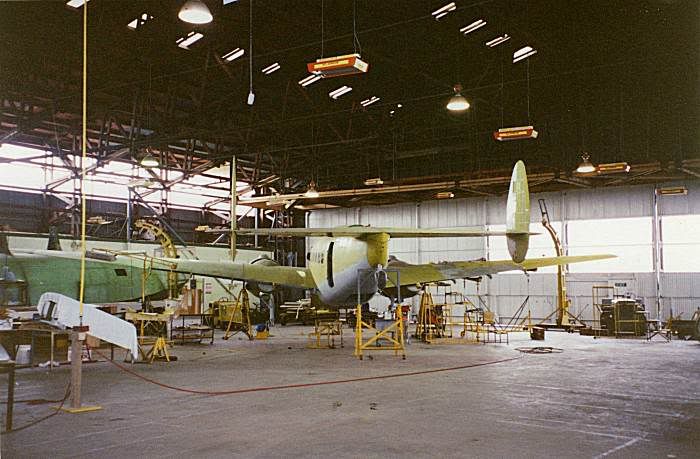
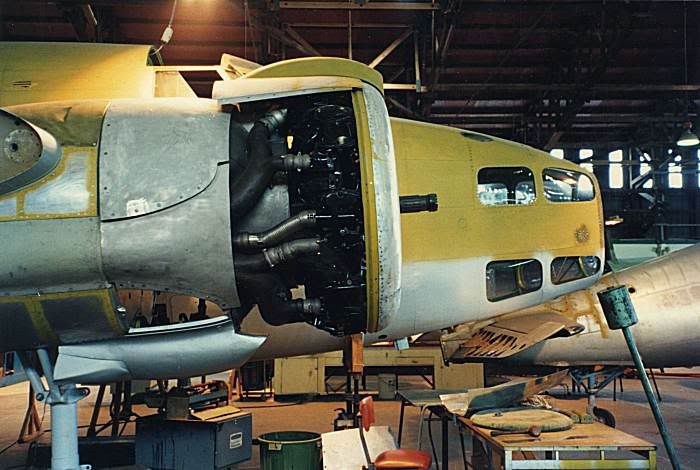
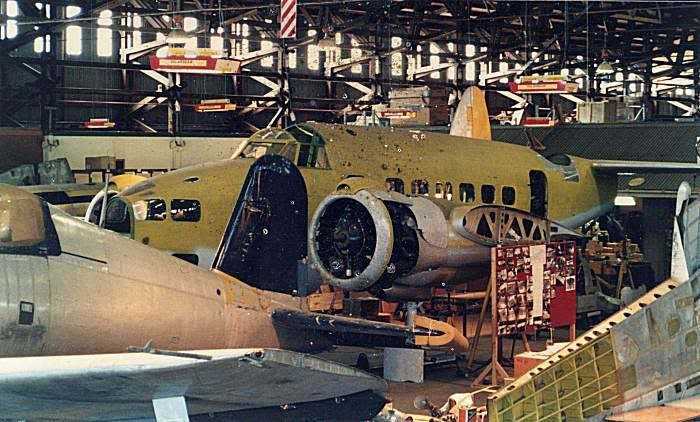
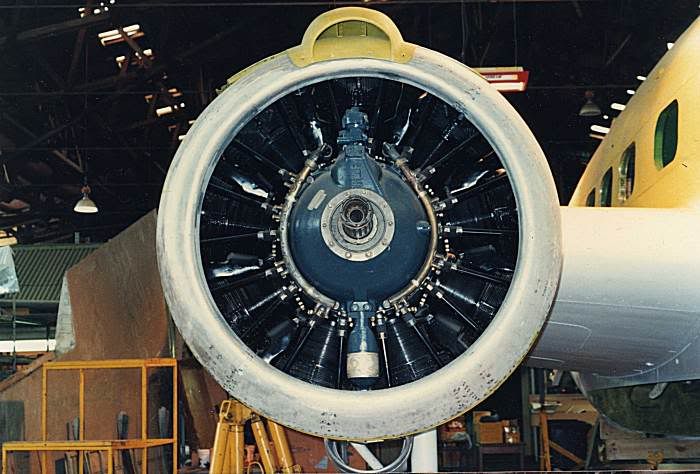
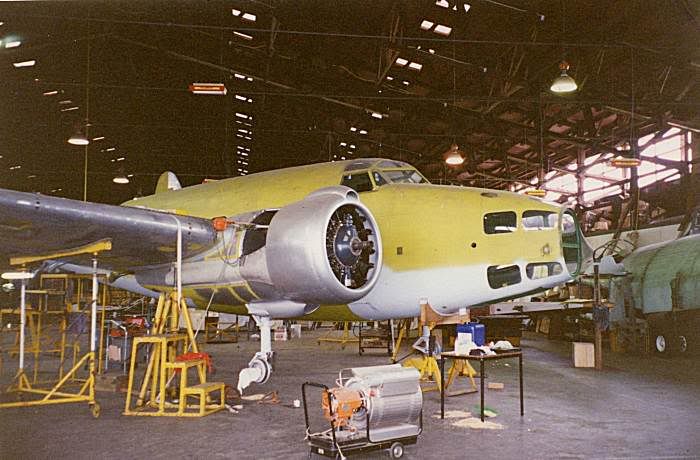
Above: Photos copyright Dave Homewood
And here is the finished result, NZ2013 on display in the museum, as seen in April 2006.

Above: Photo copyright Dave Homewood
Above: Photo copyright Dave Homewood
Above: Photo copyright Dave Homewood
Above: Photo copyright Glenn Alderton
Douglas C-47 Dakota
NZ3551The Douglas Dakota was the RNZAF's first dedicated long range transport aircraft and it revolutionised the Air Force's operational ability when it entered RNZAF service with Whenuapai's No. 40 Squadron in 1943. Used for the transportation of troops and cargo around New Zealand and the Pacific and beyond during the war, after the war the Dakotas of No's 40, 41 and 42 Squadron were a familiar site and eventually most were demobbed and formed the backbone of the National Airways Corporation (NAC) airline.
However some were retained in the RNZAF 's inventory, and this included NZ3551. This aircraft just missed war service, arriving at RNAF Station Whenuapai following its Pacific ferry flight from San Diego on the 14th of August 1945.
It was Brought on Charge by No.1 Aircraft Storage Unit at RNZAF Station Hamilton, and allocated to No.41 Squadron, who were based at RNZAF Whenuapai. This transport squadron had seen a great deal of service in the Pacific, and continued to fly the island routes bringing home the New Zealand airmen and soldiers who'd fought and won the war. NZ3551 would have been involved in this repatriation of kiwi troops and possibly even POW's.
A change of role occurred in 1953 when NZ3551 was chosen to be converted to VIP configuration for the Royal Visit in 1953, when the new Queen Elizabeth II and HRH Prince Phillip were making their first New Zealand tour.
NZ3551 underwent a make-over transformation at the de Havilland factory at Rongotai, Wellington. This began on the 5th of June 1953, and after a fill strip down and service it was returned to the RNZAF's No. 42 Squadron for Royal Tour duties on the 13th of November 1953. It now had a plush interior fit for a Queen, and a nice shiny white, silver and blue exterior.
After the tour was completed, NZ3551 was retained as the main VIP aircraft of the RNZAF and flew in the same configuration till its retirement in late 1977. A group of enthusiasts from the Aviation Historical Society of New Zealand had lobbied the RNZAF and NZ Government to retain this special Dakota as a Museum piece, and their idea was taken up. The Dakota took part in the final RNZAF C-47 flypast on the 12th of November 1977 and was withdrawn from use by No. 42 Squadron on the same day, having been replaced by a VIP Andover.
Finally the aircraft was struck off charge with the RNZAF on the 24th of January 1978. It was flown from Ohakea to Wigram on the 25th of January 1978, where it was presented to the RNZAF Museum, Wigram. It has been there since, still as pristine as the day it left the service.
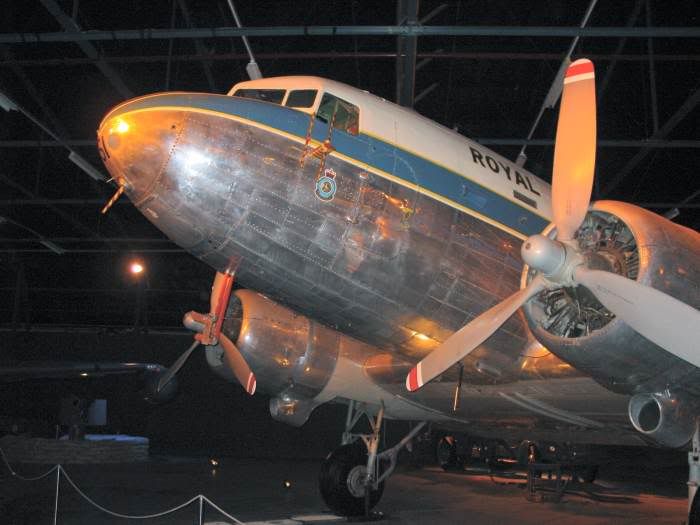
Above: Photo copyright Dave Homewood
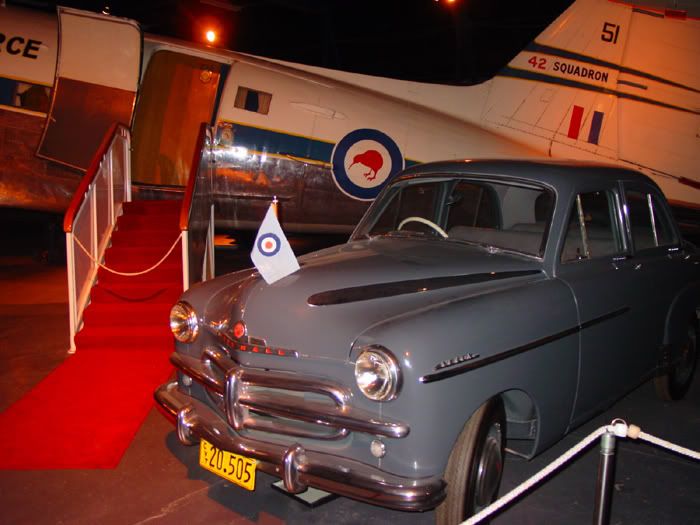
Above: Photo copyright Dave Homewood
Above: Photo copyright Glenn Alderton
Above: Photo copyright Glenn Alderton
GAF Canberra B.20
A84-240At the time that the Royal Australian Air Force gifted this Canberra to the RNZAF Museum in August 1982, the museum had not purchased its second Canberra and this was seen as a gap filler to represent the type's stirling service in the RNZAF. It also represents the close connection between the RNZAF and the RAAF, and the fact that so often the two forces have exercised and gone into conflict together against a common foe.
The Canberra was swapped by the RAAF to Wigram in exchange for former RNZAF Harvard NZ1034, which went to the RAAF Museum at Point Cook.
This B.20 model is not a type used by the RNZAF, so it retains its RAAF colours. This aircraft had just been retired from the RAAF when it was gifted to Wigram, and its last flight was crossing the Tasman to take its place in the museum.
This aircraft, A84-240, was built by the General Aircraft Factory (GAF) in Australia - under licence to original design company English Electric - and its first flight occurred on the 10th of January 1957. It was delivered to the RAAF on the 13th of March 1957.
It served with No. 2 Squadron, RAAF, during the Malayan Emergency, and actually took part in the RAAF's first jet bombing mission on the 3rd of September 1958.
A84-240 later transferred to the Aircraft Research and Development Unit (ARDU) in September 1966 before returning to No. 2 Squadron. It served with 2 Sqn in Vietnam as part of USAF 35th Tactical Fighter Wing, arriving at Phan Rang Air Base on the 16th of April 1967 following a two hour flight from Butterworth, Malaysia. It returned to Australia in June 1970. So this is a genuine war bird with two wars under its belt.
A84-240 ended its service life with 6515 flying hours on the clock. Its last flight was crossing the Tasman to New Zealand in 1984 to take up its place in the RNZAF Museum at Wigram.
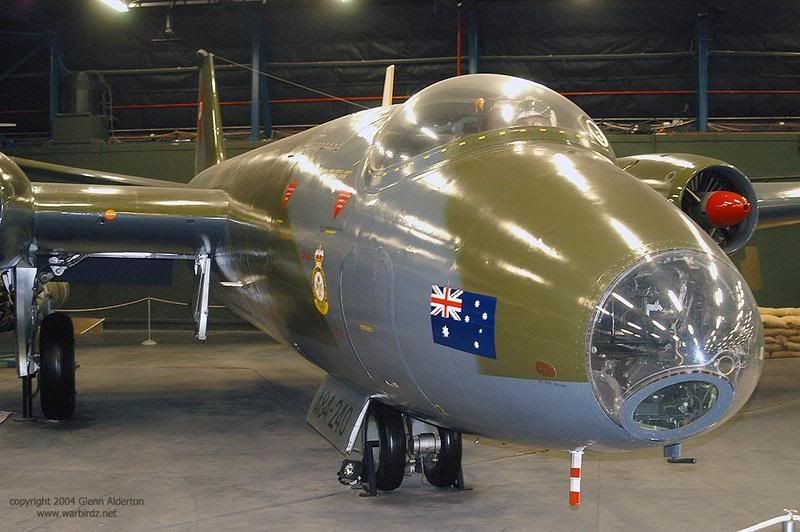
Above: Photo copyright Glenn Alderton
Above: Photo copyright Glenn Alderton
Bell UH-1H Iroquois
Serial No 69-15923 as NZ3800The Iroquois has become an icon of the RNZAF, and has now been in service for over 40 years with the Royal New Zealand Air Force. Best known to the public for its stirling work in Search And Rescue operations in the bush and mountains, the Iroquois has been applied to a myriad of other roles too, from troop transport and insertion, medivac, communications, ship to shore rescue, peacekeeping support, and disaster relief work. This includes the rescue of sheep and other livestock during heavy South Island blizzards. They have also been used as photographic platforms and in the support of police work, including the search for illegal drug plantations. The public enjoys seeing RNZAF Iroquois at many airshows throughout each year too, and for the Whenuapai Open Day in 2007 No. 3 Squadron even created an excellent display pair that thrilled the crowd.
The first six UH-1D Iroquois were received for RNZAF service in 1965. They joined No. 3 (Battlefield Support) Squadron at RNZAF Base Hobsonville in 1966, and the type has been with that squadron ever since. In 1970 a further nine Iroquois, this time the more modern UH-1H model, began to arrive to bring the squadron up to a strength of 15. The earlier models were modified to UH-1H configuration to standardise the fleet.
As well as their No. 3 Squadron base at Hobsonville there was No. 3 Squadron Detachment at Wigram, Christchurch, where anything from two to four Iroquois would be posted at a time to cover South island rescue work and other needs. This detachment closed in 1995 when the base was closed. Also several Iroquois served with No. 41 Squadron which was based in Singapore. When the Bristol Freighters of No. 41 Sqn retired, the flight of Iroquois was redesignated No. 141 Flight and remained there till 1988. This was then disbanded and the aircraft rejoined No. 3 Squadron.
Over the years the RNZAF Iroquois have also had long term deployments to Bougainville, East Timor and Antarctica, where the first deployments saw the helicopter painted orange and nicknamed the Orange Roughy.
The Iroquois are now all based at RNZAF Base Ohakea, and though they are scheduled to begin to be replaced with the new NH-90's in 2009, they remain as versatile and important as ever.
The example in the RNZAF Museum did not serve in the RNZAF. It was in fact donated by the US Army in 1994. It is actually 69-15923, which was built in 1970. It served with the 507th Medical Company in Texas as a medivac aircraft. It later served with the 163rd Aviation Company in Kentucky, and the 5th Aviation detachment in Holland. In 1992 this Iroquois was moved to the 207th Aviation Company in Heidelberg, Germany where it became a VIP transport.
When the United States began to withdraw from its bases in Germany in 1994, the Iroquois was put on the disposal list and offered to the RNZAF Museum. It had flown a total of 4852 hours.
The Museum Technical Section have prepared it to represent the RNZAF examples, and it was painted into the then current (1995) three colour camouflage scheme. This has since been superceded by the overall grey now worn, but this matters not. The Iroquois in RNZAF service has in fact worn numerous colour schemes from overall white to overall orange to olive drab with yellow strips; olive drab with orange stripes; brown, green and green camo, and the green, green and grey camo as seen on this example. As it never served in the RNZAF, it wears a mock serial number of NZ3800 (which is one digit before the actual serial sequence begins).
